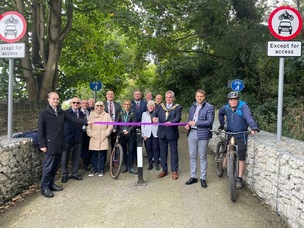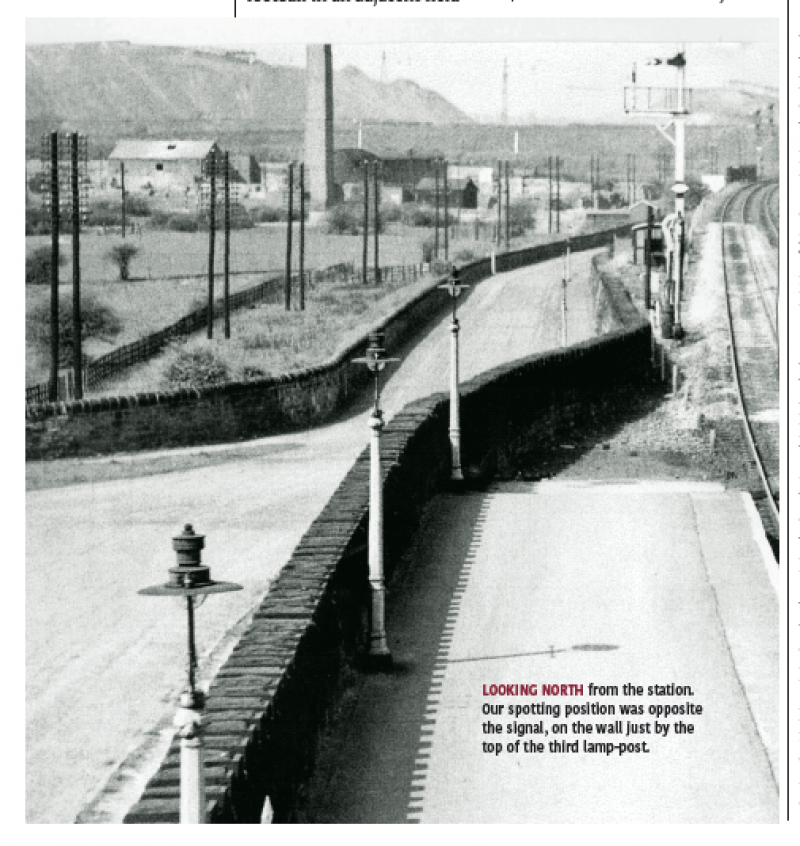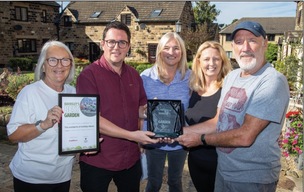This article was first featured in our Memories of Barnsley magazine back in 2021
Ken Gambles looks back at his trainspotting days as a youngster brought up in Cudworth…
Those days were indeed idyllic. From the age of six in 1956 until I began Barnsley Grammar School in 1960 at eleven, most of my time during the holidays was spent either sitting on a wall by the approach road to the north of Cudworth Station trainspotting, or playing football in an adjacent field whilst keeping an eye out for anything being ‘pegged’ on the railway.
There wasn’t the worry of homework and in the late 1950s we were more or less left to our own devices, returning home only to eat or sleep. It was an ideal spot for both trainspotting and playing football. Perfect. If we looked to our left,towards Cudworth Bridges, we could see Cudworth Brickworks with its large brick chimney. To the rear of that was Carlton Main muckstack and further still on the horizon loomed Monckton Colliery and Cokeworks, with its slender chimney burning off the excess gases in a perpetual flame. To our right was the station itself complete with footbridge leading to the prefabs in Cudworth, past the old Hull & Barnsley platforms, and at the rear of the main station buildings was the goods shed. More importantly, in front of us lay the Midland mainlines and beyond them the goods lines and sidings. All were in clear view from our vantage point and other than the weather there was never anything to spoil our pleasure.
Cudworth was a busy station with good local stopping services to Leeds and Sheffield as well as our very own two-coach ‘pull n’ push’ which trundled between Cudworth and Barnsley Court House before its withdrawal in June 1958. I only travelled on it the one time but it was an unforgettable experience, especially traversing the hugely impressive Oaks Viaduct, which spanned the Dearne Valley until its demolition in 1968.
Famous expresses such as the Thames-Clyde, the Waverley and the Devonian used the route through Cudworth and there was much fast freight traffic, in addition to the seemingly endless procession of coal trains coming to and from Grimethorpe and Houghton Main collieries. It really was a terrific place for trainspotting, which in those days was a hobby for most schoolboys and wasn't sneered at and ridiculed as it appears to be today.
I have seldom been happier, for what more was there to life than friends, football and railways? Initially, collecting numbers was the be-all and end-all, but gradually knowledge grew about engine types, shed codes and the railway infrastructure in general, such as the ex-Hull & Barnsley line in its final couple of miles to its end at Stairfoot, which I used to cross four times on each school day. It was on that wall, too, where I came to learn of change and the mutability of life.
One morning in 1956, we discovered the Cudworth North signal-box had been completely demolished. The shed codes and liveries all altered in 1957 so that Leeds (Holbeck) 20A became 55A and the carriages changed from carmine and cream, or plum and spilt milk, or blood and custard (take your pick) to all-maroon. As stock was cascaded, Royal Scots and Britannias became more common, but the older locos we'd been used to were being sent to the scrapyard. It was the beginning of the end and although the shiny diesels had novelty value, we were sensible enough to realise that eventually they would replace our beloved steam, which of course they did, and by 1968 steam had been eradicated from the railways of Britain.
I have so many fond memories of those days. I remember using a trolley to take people's luggage at holiday time, saving them the heavy task of carrying suitcases on the long approach road, for which we were handsomely tipped. Then there was discovering the raspberry canes still producing lovely fruit after the allotments by the railway had been abandoned; being excited to see basket after basket of racing pigeons being released from the small triangle of grass at the station end of Station Lane. Best of all was being allowed to cab 41282 in the station before it left on its short journey to Barnsley and having a ride on 45566 Queensland as it deposited coaches in readiness for the following morning's early Leeds train.
I left home to study in London in 1967, married in 1973 and moved back to Yorkshire to live and work in Harrogate. My father and stepmother still lived in my old house on Pontefract Road, and although I had stopped trainspotting in 1964, on one of our family visits with our children I thought it would be good to have a trip down memory lane to my old stomping ground.
The familiar signals were still there even in 1979, although the platforms and footbridge had gone. The signal-box at the station was still operative and the main station buildings were reduced in size, but still being used for maintenance crews, I presumed. There was still plenty of rail traffic, passenger and freight and the Peaks, class 47s, and 37s were still going strong some fifteen or so years since I had first seen them. To be brief, I got the railway bug again and for the next few years took hundreds of slides, probably as some kind of penance for neglecting the end of steam, I don't know.
It was, I suppose, a futile attempt to recapture those halcyon days of my youth and I must admit it was a poor substitute, but enjoyable Nonetheless. After my father died in 1991 we still visited my stepmother. I had stopped my photography in the mid-eighties, but when she had to go into a care home in 2007 and the house was up for sale, I paid a last visit to check everything was in order for viewings and so on. Should I go and have what would probably be my last ever look at Cudworth Station and its environs? They say you should never go back. How true. I did a dangerous thing. I thought I would re-create the walk I used to take from home to the station and then visit all the places I used to know so well.
Next to our house used to be a smallholding where Col Porter kept chickens and sold their eggs. That was long gone and there were houses on every bit of where the fields and hen huts once were. There was no shortcut so I had to walk the long way round to the very top of Station Lane. On the right used to be a huge field where we played football, fed the horses and had snowball fights in winter, but now there was nothing to see but houses, and more houses. Midland Terrace was there, as was the old bridge across the dyke, but rubbish had been dumped there and the approach to the station was overgrown and derelict. The gas lamps which I could remember being lit as the evenings darkened, had all been uprooted and the wall where we'd once sat so happily was breached in so many places. There were no signals and the site of the station was a wasteland. Even the unique lovely signalbox was gone, apparently burned down by vandals years before. The only evidence that a railway had ever been here were the remains of the ballast, and even that was being reclaimed by nature.
It was so utterly sad and depressing that I truly wish I hadn't bothered. By chance a couple of years ago I met a lad from Cudworth who was in his mid to late twenties. We chatted about the village, but when I mentioned the station he looked blank. He genuinely had no idea that a large busy station had ever been there. He did, however, mention ‘the temple’. I was puzzled until it turned out he was talking about the base of the water-tower and had no idea it was railway-related. Of course time passes and things change, as they must, and it’s inevitable that we must fall back on our memories, which I suppose is not too bad when they can be as wonderful as mine are of Cudworth Station in the glorious late 1950s.
For a full list of archive editions of Memories of Barnsley please click here.
Also available: The Golden Age of Yorkshire Steam and Beyond from Pen and Sword books




























